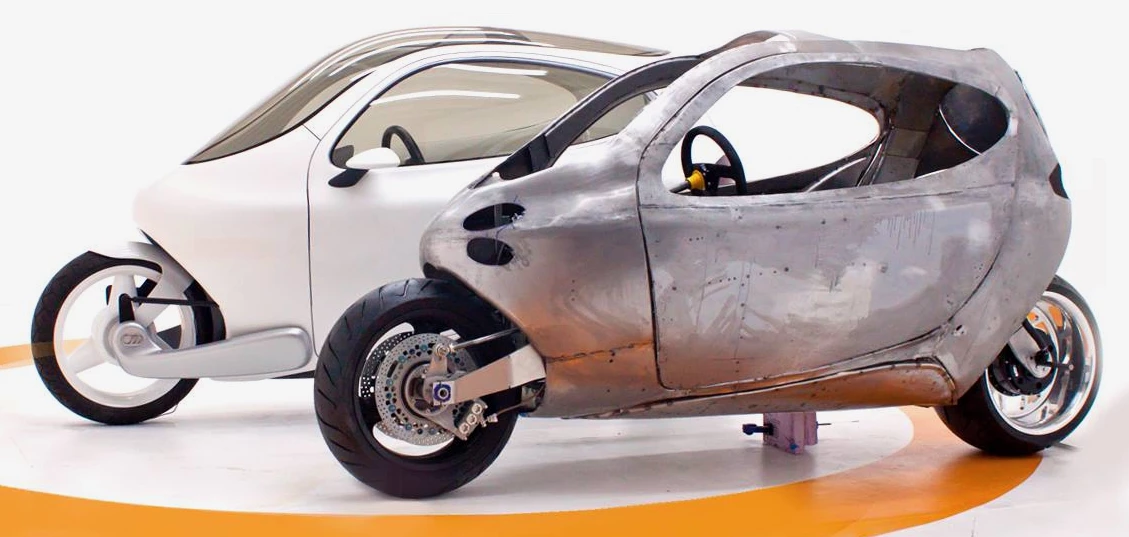San Francisco mobility company Lit Motors has announced a new production plan for its self-balancing, fully-enclosed C-1 electric motorcycle. We got to see a functioning prototype for ourselves, back in 2021.
Editor's note: Readers often ask us for follow-ups on memorable stories. What has happened to this story over the years? This article was originally published in 2021 but has been re-edited and updated with new information current as of May, 2025. Enjoy!
There are definitely a lot of daydreamers and big thinkers out there, showing off their 3D renderings of inventions that "ought to work" – if they were to actually exist. It’s understandable, therefore, that many readers reacted with skepticism when we first reported on Lit Motors’ C-1.
The designers of the fully-enclosed electric motorcycle claimed that it would be able to stand up on its own, thanks to electronically-controlled onboard gyroscopes. Well, while there may not be a C-1 in a showroom near you just yet, the folks at Lit did indeed succeed in building a functioning prototype of their vehicle. We made the trip to their San Francisco workspace 13 years ago, to have a look for ourselves.

The rather steampunk-looking proof-of-concept prototype was electronically limited to a speed of about 10 mph (16 km/h), and its two scaled-down gyros generated only half of the approximately 1,300 lb-ft (1,763 Nm) of torque planned for the production version. It turned out that that was still enough, however, to keep it upright while being piloted around the local streets – or even when being yanked sideways by a van, as you'll see in the following 2024 video.
While the vehicle that we saw was still very much a work in progress, Lit Motors president Daniel Kim said that they learned a lot from making it, particularly when it came to keeping the weight down on the final version. "I have a couple of ideas for our next revision," he told us. "I’ve got some tricks up my sleeve for what the real potential of this vehicle will be."
Kim had hoped to be selling C-1’s by 2014. By that time, it was envisioned that the vehicle would have a top speed of 125 mph (201 km/h), a battery range of up to 200 miles (322 km) per charge, and space for a second passenger – all for US$16,000.

Needless to say, things have been delayed a bit, due mainly to finessing of the gyroscopic balancing system. That said, the company is now finishing up a WeFunder campaign, and has announced a nine-year production plan – beginning now.
Among other things, a new beta prototype should be ready within the next year, followed by test rides for prospective buyers and existing backers within two years. Initial production is expected to commence in 2029, with a targeted output of 300,000 units per year by 2034. Watch this space for updates ...
A version of this article was originally published in 2021.






























